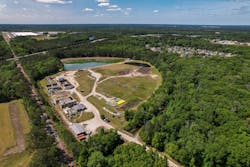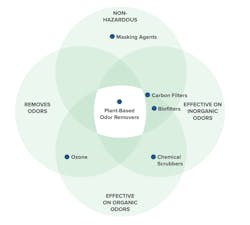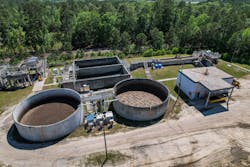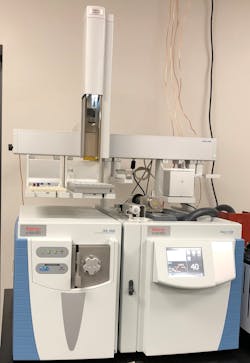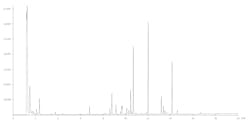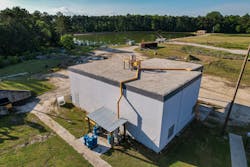Natural Neutralizers Mitigate Municipal Wastewater Odors
It can be easy to take municipal water and wastewater treatment, distribution, and collection for granted, and barely notice their existence, but this can change quickly when odors from these sites drift outside facility fences. Those located near residential and commercial areas are especially prone to public scrutiny, often resulting in odor complaints and reducing the quality of life for nearby inhabitants, and for plant personnel.
Some municipalities attempt to cover up foul smells, but this is not an effective practice because simply masking odors is a temporary solution. To properly manage odors, it is necessary to neutralize them by altering their molecular makeup to eliminate the odor-causing components.
Accurately determining the source of problematic odors and their neutralization requirements is challenging, but municipalities can enlist the help of suppliers with knowledge and advanced laboratory technologies — such as gas chromatographs — to identify molecular chemistry and mitigate odors. The experts at these suppliers can then prescribe and provide products specially designed to remove these odors from the air.
Odor Control Challenges in the Water & Wastewater Industry
Controlling wastewater odors is one of the most challenging aspects of its collection and treatment, and left unmitigated, these issues invite negative attention, that can damage the reputation of facilities and the agencies that run them. While there are similarities from plant to plant, each has a unique set of problematic processes and treatment areas.
While there are many odor control methodologies in the industry, traditional solutions each have shortcomings in various forms. These methods include: masking agents, chemical scrubbers, adsorption and carbon filters, ozone, biological filters, and others.
Each of these traditional methods is either hazardous, ineffective on organic or inorganic odors, unsuccessful at neutralizing odors, or a combination of all these issues. Additionally, these methodologies require equipment, materials, setup, and maintenance from multiple partners, and these complexities can render systems unwieldy and costly to operate. Modern plant-based odor removers are simple to distribute in the air within or around a facility, and they safely span all odor removal applications by using custom, research-based formulations.
Research-driven & Plant-based Solutions for Effective Odor Control
Where traditional methods fall short, modern plant-based odor eliminators get the job done. These formulations are research-based and optimized to chemically react with and neutralize odor-causing components at the molecular level.
A GC chromatogram (Figure 2) is a visual output of the data recorded by the detector. It is presented as a plot of detector response (y-axis) versus retention time (x-axis).
Each compound detected appears as a single peak on the graph, with the corresponding retention time value used for identification. Once the odor-causing compounds are identified, the scientists concoct a formulation using plant oils to molecularly neutralize the odors when the compound is combined with the odors in the atmosphere.
This results in versatile and cost-efficient solutions — specially crafted for maximum effectiveness in each application — with each leveraging customized concentrations of plant oils, bio-based surfactants, and water to eliminate odors. Wastewater odor neutralization formulations typically target problematic odors caused by the presence of hydrogen sulfide, sulfur dioxide, amines, skatoles, indoles, and mercaptans.
Solution Delivery Via Vaporization
Vapor phase systems are frequently used to deliver natural odor neutralizers in water and wastewater environments, made up of perforated pipe ducting to carry and distribute formulations at an odor’s source, neutralizing it on contact. Vaporization is typically preferred to atomization because it uses less water, providing cost savings and a more eco-friendly delivery method.
Vapor phase delivery technology effectiveness is driven by delivery velocity and droplet size. An impacted area is full of odor-causing molecules, and when droplets of neutralizer are released slowly, they come into contact with a small count of odor molecules. By contrast, whizzing droplets burst through many more odor molecules before evaporating, creating more collisions and odor-neutralizing activity. Additionally, smaller droplets provide more surface area per volume than larger ones, increasing contact and reaction with odors.
These flexible and efficient delivery systems distribute odor eliminator at rates as low as 130 cubic feet per minute (CFM) to as high as 2,400 CFM, making them adaptable to many locations and applications. These systems:
- Provide small droplets and high absorption for effective odor control;
- Require no mixing or water dilution on site to operate; and
- Can be provided with service contracts to relieve facilities of most maintenance tasks.
Real World Results
At a wastewater treatment plant tucked between urban sprawl and suburban development, odors caused complaints from nearby commercial and residential neighbors, including a public school. Wanting to remain good neighbors, plant managers took steps to mitigate malodor release from the plant.
Working with engineers and laboratory scientists at OMI Industries, the facility installed three vapor phase units to deliver custom-formulated Ecosorb 606 for neutralizing odors at the plant influent flume area, and at the aerated grit removal area.
The 130 CFM system at the plant influent area and 450 CFM system at the grit removal area incorporated more than 900 feet of 6-inch vapor line, covering primary clarifiers as well. The other 450 CFM system was installed outside the sludge storage building, which is insulated, heated, and heat traced to withstand weather fluctuations. Vapor ducting feeds from the machine outside through the wall, creating a continuous loop surrounding the building.
Armed with this cost-effective equipment, the plant runs around the clock, with no further odor complaints since installation. Another wastewater treatment plant, initially built a great distance away from populated areas, became a subject of odor complaints in the last decade on the heels of a rapidly-expanding township creeping nearer and nearer to the facility. To address this issue, city officials recruited OMI Industries’ services, impressed by its effective and safe odor removal formulations, and low capital costs compared to other odor mitigation technologies.
After collecting samples from five different sources around the facility — collection pond, digester, sludge roll-off, grit chamber, and headworks — hydrogen sulfide and mercaptans were identified as the leading odor-causing offenders. While some facilities need to deploy multiple formulations to combat different odors, the team was able to simplify the solution at this facility by using Ecosorb 806, a formulation effectively neutralizing all odors detected in the five samples.
With a 130 CFM vapor phase delivery unit, two 450 CFM units, and a 2,400 CFM unit, the product is pumped through a perforated pipe distribution system, creating a vapor to eliminate airborne odors around the facility.
This odor control solution was so effective that the municipality is specifying another into its construction plans for a plant expansion, which will double daily capacity from 3.2 to 6.4 million gallons per day.
Effective Eco-products Enhance Environment
By deploying plant-based odor removers around water and wastewater facilities, agencies can effectively mitigate foul odors using safe, environmentally-friendly, and cost-efficient methods. These custom formulations do not mask smells, but instead eliminate them by breaking down and neutralizing odor-causing molecules.
These mitigation techniques empower municipalities to free their attention from odor control and complaint handling, and instead focus on their critical responsibilities to the public: to produce and distribute enough water to meet demand, guarantee water quality meets or exceeds requirements, safely treat and dispose of wastewater, and ensure sustainability far into the future.
